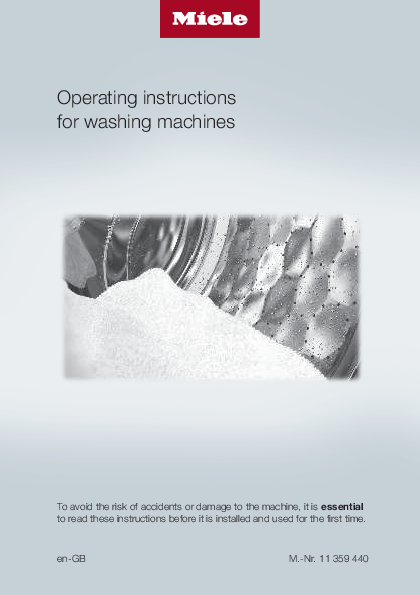ℹ️ Document Conversion Notice:
This page was converted from the original file for easier reading. Diagrams/images may appear only in the original PDF below.

File info: application/pdf · 84 pages · 2.17MB
Miele Washing Machine Operating Instructions
This document provides essential operating instructions for Miele washing machines, specifically detailing the model WSD 123.
It covers crucial information to ensure safe and efficient use, including:
- Comprehensive safety warnings and guidelines.
- Step-by-step instructions for installation and initial setup.
- Guidance on selecting programmes, detergents, and extra options.
- Tips for environmentally friendly and economical washing.
- Troubleshooting common issues and maintenance advice.
- Technical specifications and consumption data.
Familiarize yourself with these instructions before operating your Miele washing machine to maximize performance and longevity.
For further support, accessories, or service information, please visit the official Miele UK website.
Models: Washing Machines